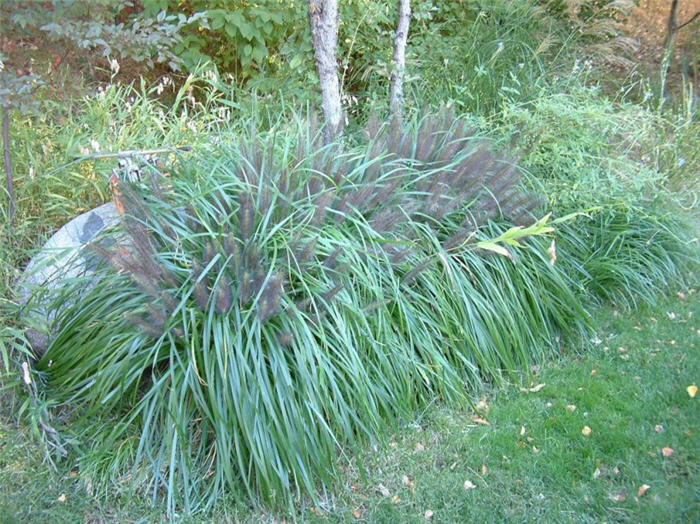| Botanical Name: Pennisetum alopecuroides 'Moudry' | |
| Common Name: Moudry Fountain Grass |

-
Anatomy
-
Culture
-
Design
Plant Type
Grass
Height Range
1-3'
Flower Color
Purple
Flower Season
Summer
Leaf Color
Green
Bark Color
n/a
Fruit Color
n/a
Fruit Season
n/a
Sun
Full, Half
Water
Medium
Growth Rate
Fast
Soil Type
Sandy, Clay, Loam, Rocky, Unparticular
Soil Condition
Average
Soil pH
Neutral
Adverse Factors
n/a
Design Styles
Formal, Japanese, Meadow, Mediterranean, Ranch, Spanish, Water Garden, Woodland
Accenting Features
Fall Color, Showy Flowers
Seasonal Interest
Winter, Summer, Fall
Location Uses
Background, Entry, Perennial Border, Shrub Border, Foundation, Parking Strip, Patio, Parking Lot, Swimming Pool, With Rocks
Special Uses
Container, Cut Flowers, Mass Planting, Small Spaces
Attracts Wildlife
Birds
Information by: Stephanie Duer
Photographer:
Photographer:
-
Description
-
Notes
This grass has dark green, glossy blades, forming a dense, tuft-like habit. Foxtail-like plumes are nearly black and appear in mid-summer. Plumes are useful in flower arrangements. 2 feet tall and 3 feet wide.
Fountain grass are very adaptable, growing in just about any soil as long as it is well drained and in full sun. They perform the best when they are in fertile, loamy soils and receive regular watering. As with other grasses, cut them back in late winter, see the Guides for details. A very tidy grass, well suited to more formal sites and shrub borders, but it also holds its own in raucous perennial borders, providing a valuable bridge between blooming seasons and into the winter months.